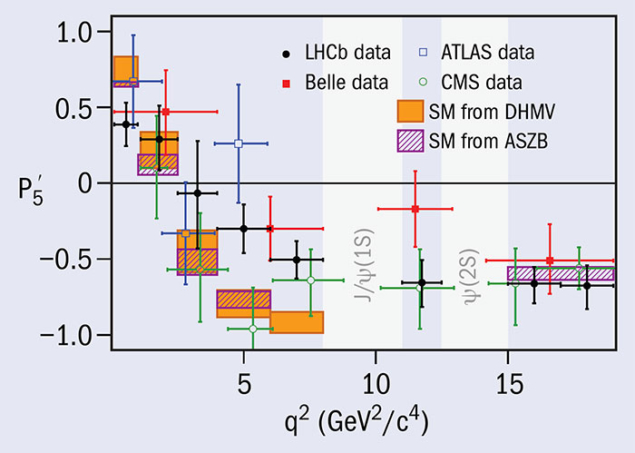
Image credit: SJTU.
The Large Hadron Collider Physics (LHCP) conference took place at Shanghai Jiao Tong University (SJTU) in China, on 15–20 May. One of the largest annual conferences in particle physics, the timing of LHCP2017 chimed with fresh experimental results from the ALICE, ATLAS, CMS and LHCb experiments based on 13 TeV LHC data recorded during 2015–2016. The conference saw many new results presented and also offered a broad overview of the scientific findings from Run 1, based on lower-energy data.
One of the main themes of the conference was the interplay between different results from various experiments, in particular those at the LHC, and the need to continue to work closely with the theory community. One such example concerns measurements of rare B-meson decays and in particular the decay B0 → K*l+l–, which is sensitive to new physics and could probe the presence of new particles through the study of the B0 helicity structure. The LHCb collaboration has found several discrepancies with Standard Model (SM) expectations, including a more than three standard-deviation discrepancy in the angular distributions of this B0 decay. New results presented by ATLAS and CMS have created further tension in the situation (see diagram), and more data from LHC Run 2 and continued theoretical developments will be critical in understanding these decays.

An exciting result from the ALICE experiment showed a surprising enhancement of strange-baryon production in proton–proton collisions (CERN Courier June 2017 p10). In nucleus–nucleus collisions, this enhancement is interpreted as a signature of the formation of a quark–gluon plasma (QGP) – the extreme state that characterised the early universe before the appearance of hadrons. The first observation of strangeness enhancement in high-multiplicity proton–proton collisions hints that the QGP is also formed in collisions of smaller systems and opens new directions for the study of this primordial state of matter.
From the Higgs sector, CMS reported an observation of Higgs decays to two particles with a significance of 4.9 standard deviations compared to SM backgrounds. Differential cross-sections for Higgs decays to two Z bosons, which test properties of the Higgs such as its spin and parity and also act as a probe of perturbative QCD, were shown by ATLAS. Throughout the conference, it was clear that precision studies of the Higgs sector are a critical element in elucidating the nature of the Higgs boson itself, as well as understanding electroweak symmetry breaking and searching for physics beyond the SM.
In addition to these highlights, a broad spectra of results were presented. These ranged from precision studies of the SM, such as new theoretical developments in electroweak production, to numerous new search results, such as searches for low-mass dark-sector mediators from the CMS experiment and searches for supersymmetry in very high-multiplicity jet events for ATLAS. The conclusion from the conference was clear: we have learnt a tremendous amount from the Run 2 LHC data but are left with many open questions. We therefore eagerly await the newest data from the LHC to help further dissect the SM, cast light on the nature of the Higgs, or to find an entirely new particle.








